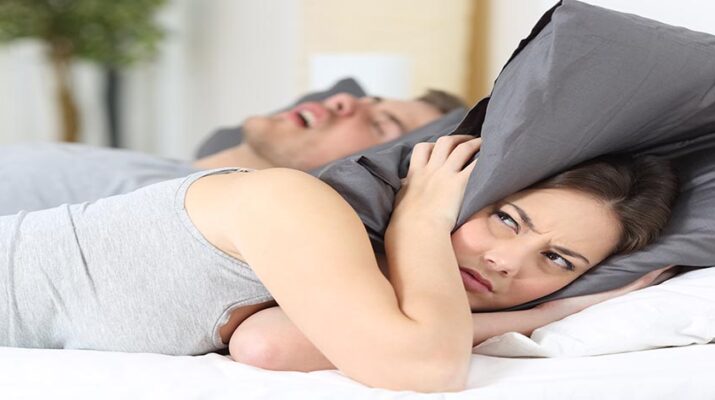By Deborah Jeanne Sergeant
The ear-splitting, chainsaw-like sounds coming from the other side of your bed does not necessarily mean that your beloved has sleep apnea.
“Snoring is an indication of narrowing of the airway,” said Sherif El Bayadi, medical director of St. Joseph’s Health Sleep Services.
“This usually happens most remarkably in the back of the throat and may be worsened with sleeping in the supine position In a supine position, the tongue and soft tissue get closer together due to gravity.”
About half the population snores sometimes, but that does not mean the person necessarily has sleep apnea.
With sleep apnea, “there is no air movement because of a collapsed airway,” Bayadi said.
For 10 to 20 seconds, the patient does not get enough air and may gasp and choke.
This sporadically awakens the person to breathe all night and results in feelings of exhaustion the following day.
During deep sleep, apnea is worse, as the muscles relax even more. With snoring, it is usually just the non-snorer whose sleep is disrupted.
Sleep apnea fragments sleep, making the person feel less rested. Quality of life is typically why patients seek treatment for sleep apnea. But sleep apnea can contribute to an increased risk for many health conditions.
Soda Kuczkowski, sleep health educator and owner of Start with Sleep in Buffalo, listed weight gain, memory loss, and tied to a greater risk of high blood pressure, heart attack, stroke, congestive heart failure, atrial fibrillation, diabetes, and certain cancers among the increased risks associated with untreated sleep apnea.
Risk factors for developing sleep apnea include being overweight or obese, large neck size, age, male or menopausal, having high blood pressure, a family history, diabetes or being a member of a minority and veteran status.
“Veterans are four times more likely than other Americans to suffer from sleep apnea,” Kuczkowski said.
The disruption in breathing deprives the brain and the rest of the body of sufficient oxygen. The condition has four types: obstructive, central, complex and positional.
Obstructive “involves a decrease or complete stop in airflow despite an ongoing effort to breathe,” Kuczkowski said. “It occurs when the muscles relax during sleep, causing soft tissue in the back of the throat to collapse and block the upper airway.”
Central sleep apnea involves the brain not sending signals to the muscles that control breathing. Kuczkowski said that this breathing disorder involves problems in the brain or heart, not a blockage.
Complex sleep apnea is a mixture of obstructive and central apnea. Positional sleep apnea is as its name denotes: sleep apnea involving body position during sleep.
Easy, home remedy interventions for snoring include a nose dilator, eucalyptus essential oils, side sleeping, using a humidifier, proper hydration, limiting alcohol and maintaining proper weight.
Sleep apnea requires professional treatment. Typically, insurance coverage permits patients to self-refer to a sleep specialist. Most people can have a sleep study performed at home. However, some do need to stay overnight at a sleep center.
Many patients also assume that treatment involves a cumbersome CPAP, or continuous positive airway pressure device. But newer therapies like dental devices and Inspire, an implantable device, can make treatment easier.

